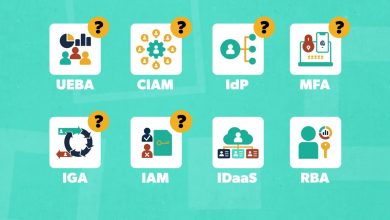Market Overview: The Channel Opportunity for Desktop as a Service solutions
A detailed overview of the Virtual Desktop Infrastructure market, and the $50 Billion 'Desktop as a Service' opportunity this presents for MSPs.
 Virtual Desktop Infrastructure (VDI) is a technology that allows users to access their desktop environment remotely from any device.
Virtual Desktop Infrastructure (VDI) is a technology that allows users to access their desktop environment remotely from any device.
It offers numerous benefits such as increased security, centralized management, and flexibility.
VDI uses server hardware to run desktop operating systems (OS) like Windows or Linux, or other software programs, on a VM with the desktop OS hosted on a centralized server in a physical datacenter.
As businesses continue to embrace remote work and the need for secure access to corporate resources grows, the potential market for VDI is expanding rapidly. The global market for VDI was valued at around $14.4 billion in 2022 and is estimated to grow to $50.5 billion by 2030, at a CAGR of approximately 20.3%. Key players include Microsoft and their Azure Virtual Desktop capability, recognized as a Magic Quadrant leader.
The sector has experienced major disruptions that present considerable opportunity for channel partners. The Broadcom acquisition of VMware and subsequent divestiture of the EUC unit, twinned with the ongoing and relentless adoption of remote and virtual work, presents a dual force of disruption and opportunity in this sector.
 Market Drivers – Desktop as a Service
Market Drivers – Desktop as a Service
VDI capabilities can be deployed on-premise, and also accessed as a managed service: ‘DaaS’ – Desktop as a Service.
The ‘DaaS Like a Pro’ team offer this comprehensive analysis report of the DaaS market, exploring in fine detail all aspects including technologies and also customer demand factors:
- Key Drivers: Remote work leads DaaS adoption, followed by ease of management and deployment speed.
- Adoption Trends: Over 70% use DaaS, with growth expected despite cost and integration challenges.
- Satisfaction: Most users are satisfied, valuing flexibility, security, and reliability.
Nerdio also conducted analysis into the DaaS market, showing that the UK has surpassed the US in DaaS adoption — with 76% of UK IT leaders citing both cybersecurity and carbon emissions as key reasons for making the switch.
Partner Synthesis
The research highlights the channel opportunity of synthesizing component product categories to enable complete enterprise solutions, such as ‘DEX’ – Digital Employee Experience, as ControlUp describe here. Examples of this include Nerdio, Flexapp and Rimo3 teaming up to address a complete End User Computing scenario.
Industry Solutions
Some of the key sectors that are driving the adoption of VDI include:
- Healthcare: The healthcare industry is increasingly adopting VDI to provide secure access to patient records and medical applications for healthcare professionals.
- Finance: Financial institutions are leveraging VDI to ensure data security and compliance while enabling employees to work remotely.
- Educational Institutions: Schools and universities are implementing VDI to provide students and faculty with access to virtual labs and educational resources from anywhere.
- Government: Government agencies are adopting VDI to enhance data security and enable remote work for employees.
- Manufacturing: VDI is being used in the manufacturing industry to provide secure access to critical applications and data for employees working on the shop floor or remotely.
These are just a few examples, and the potential market for VDI extends to many other sectors as well. The increasing need for secure remote access, data protection, and centralized management is driving the adoption of VDI across industries.
Key Factors Influencing Buyers
When considering the adoption of VDI, buyers are influenced by several key factors. These factors play a crucial role in their decision-making process. Let’s explore some of the key factors that influence buyers:
- Security: Data security is a top concern for organizations. Buyers look for VDI solutions that offer robust security features such as encryption, multi-factor authentication, and secure data transmission.
- Scalability: Buyers consider the scalability of VDI solutions to ensure they can accommodate their growing workforce without compromising performance or incurring significant costs.
- Performance: The performance of VDI solutions is critical for a seamless user experience. Buyers evaluate factors such as responsiveness, application loading times, and network optimization.
- Cost-effectiveness: Buyers assess the total cost of ownership (TCO) of VDI solutions, including hardware, software, maintenance, and support. They look for solutions that provide a good return on investment (ROI) and long-term cost savings.
- User Experience: A positive user experience is essential for user adoption and productivity. Buyers consider factors such as ease of use, customization options, and support for various devices and operating systems.
- Management and Administration: Buyers look for VDI solutions that offer centralized management and administration capabilities, making it easier to deploy, update, and monitor virtual desktops.
- Integration: Buyers consider the compatibility and integration capabilities of VDI solutions with their existing IT infrastructure, applications, and systems.
- Support and Maintenance: Buyers assess the level of support and maintenance offered by VDI vendors, including technical support, software updates, and troubleshooting.
These key factors influence buyers’ decisions when evaluating VDI solutions. Organizations prioritize their specific requirements based on their industry, size, and business objectives.
In conclusion, the potential market for Virtual Desktop Infrastructure (VDI) is expanding across various sectors as organizations recognize the need for secure remote access and centralized management. Buyers are influenced by factors such as security, scalability, performance, cost-effectiveness, user experience, management capabilities, integration, and support. Understanding these key factors is crucial for VDI vendors to meet the evolving needs of the market and drive adoption.
Vendors and MSPs
Suppliers include vendors who provide the VDI software platforms, which can be deployed in-house or via Cloud hosting, and ‘DaaS’ (Desktop as a Service) providers who utilize that software to offer managed services.
| Supplier | VDI Solution | ||
| Azure VDI | Azure Virtual Desktop is a desktop and app virtualization service that runs on the cloud. Integrate into existing desktop and app virtualization environments with Citrix DaaS for Azure and VMware Horizon Cloud on Microsoft Azure. | ||
| AWS Workspaces | Amazon WorkSpaces family of solutions provides the right virtual workspace for varied worker types, especially hybrid and remote workers. | ||
| Dell APEX | Rapidly deploy virtual workspaces for your employees in a cloud environment, while delivering a VDI user experience that is up to 2.5 times better than Amazon WorkSpaces. | ||
| Citrix DaaS | Citrix DaaS lets you provide a secure workspace experience on any device. It’s all the cost benefits of a managed DaaS solution, plus the added advantages of greater IT agility, better corporate security, and more end-user productivity. | ||
| V2 Cloud | V2 Cloud makes it incredibly easy to deploy cloud-hosted virtual Windows desktops in less than 10 clicks. | ||
| VMware Horizon | With flexible deployment options from on-premise to the public and hybrid cloud, VMware Horizon supports key use cases that enable organizations to respond to change and drive business outcomes. | ||
| Workspot | A Workspot Cloud PC is just like a Windows 10/11 PC, but it’s delivered from the public cloud as software-as-a-service (SaaS) and end users can access all their apps and data from anywhere, using their device of choice. | ||
| Cameyo | Cameyo’s Virtual Application Delivery (VAD) platform enables your people to quickly and easily access ALL of their apps – Windows, Linux, SaaS, and internal web apps – either from the browser or as Progressive Web Apps (PWAs) for a seamless app experience. |



